
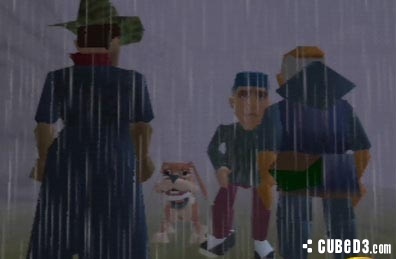
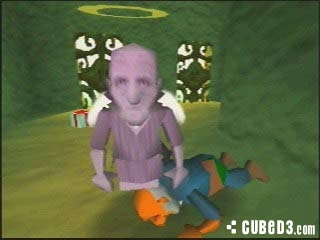
Where did it all begin?
Created by famous Japanese copywriter and television personality, Shigesato Itoi, the revered franchise (in Japan at least) made its first appearance on the Famicom system in 1989. Mother, a Japanese exclusive that never reached North American -- let alone European -- shores, was an RPG title with a modern, if peculiar, setting. Despite the fact that its 1995 sequel, Mother 2, was released in North America under the localised title of EarthBound, the series remains something of a curious enigma to the majority of Western gamers even to this day due to poor sales of the title (despite its considerable success back home) and Nintendo’s apparent fear of legal repercussions should it ever re-release it.Despite the series never receiving the international attention it deserved, this didn’t stop Itoi-san and Nintendo from creating a third entry in the series. Originally planned for the SNES, Mother 3 (later Earthbound 64 to those in Western territories), eventually became a project that was due to debut on the Nintendo 64DD. However, when the add-on device didn’t work out for Nintendo, selling a woeful amount in the company’s homeland, the game was later transferred to the standard N64 system before finally being canned in 2000.
It is worth noting that EarthBound 64 did eventually see the light of day in Japan. Six years after its cancellation, Itoi-san brought the title to the Game Boy Advance, transferring most of the original ideas and story that were destined for its short-lived 64-bit predecessor. Mother 3 (the final Japanese title) was met with a positive reception from the critics and Japanese gamers alike. The quirky, very Eastern humour of the title practically rendered any hope of localisation useless (although a valiant fan effort proved otherwise) and the only way you will ever get to play this game is through less-than-legal means.
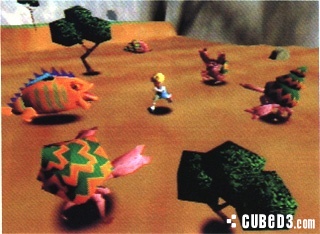

What was it all about?
Thankfully, not too much was changed with regards to the storyline during the transition from N64 to GBA. Mother 3 is a tragedy that predominantly follows the lives of two young boys known as Lucas and Claus. One day, their mother is killed by a usually-harmless creature, and this has a profound effect on both the boys and their father, Flint. The game centres on the hardships that these characters, as well as a few playable others, have to endure in the aftermath of this loss. However, the series is not as serious as some of its issues make it out to be; each instalment features overtly Japanese themes, subtle pop culture references and at times, utterly bizarre dialogue. It’s very much in the same category as Konami’s Goemon games in this regard.The GBA version is known for its vibrant and colourful visuals, despite the serious undertones. However, early gameplay footage of the N64 version paints a very different picture, portraying a much darker ambience than what was finally realised back in 2006. Not only that, but the 3D gameplay was undeniably more advanced, presenting the opportunity for new features that could be implemented for the first time into the series.
What if EarthBound 64 had been released for the N64? Gameplay aside, would it have still possessed the same feel as its GBA counterpart? Itoi-san has stated in a past interview that certain aspects of the original N64 game were designed to be much darker -- in particular, the ending. Given the time lapse that occurred between the two versions, it’s fair to say that some aspects inevitably changed and Itoi-san has said that by the time he got around to making Mother 3 for GBA that he was “a good person” and, as a result of this change, faced much more opposition from colleagues with regards to the storyline decisions. His unusual response is very much indicative of how strange this series really is. How Itoi-san originally intended to deal with the surprisingly un-Nintendo topics like death in the N64 version is subject to much debate, although some clues have been given. As stated above, it was his initial plan to present the player with a much darker ending. Seeing as the GBA title ends with the suicide of a young boy, it’s interesting to consider to what extent he would have taken the story in the original game.
Moreover, and perhaps in keeping with the game’s bizarre nature, one of the original ideas was to “betray the player”, essentially disappointing them throughout. Those who have played EarthBound will, no doubt, recall some of its more bizarre moments, such as Poo’s trial, meaning that the creator most certainly did not feel limited by conventional approaches or storytelling norms. With this in mind, it isn’t unreasonable to think that EarthBound 64 could definitely have been avant-garde back in those days, had it been released.


Why did it disappear?
The team at Ape Studio was plagued by inexperience when it came to working with both 3D and the N64’s cumbersome hardware. Despite assistance from the development tools and a helping hand from the Pokémon Stadium development team, the game suffered numerous delays. The team became so demoralised by this that their glorious leader went as far as to state in an interview that, “at this point [in development] a Mother 4 is completely out of the question; the development team would hang themselves.” The game was shown in playable form at Nintendo’s Spaceworld show in 1999, though, with an intended release date of 22 March, 2000, but not only did the game not release that year, it didn’t even make an appearance at E3.Eventually, Itoi-san made a statement on 22 August, 2000, announcing that the game had, after much speculation, been cancelled. At the time, he referred to Mother 64 as a “memory of the future,” which ironically ended up being the case when it was remade and then released in its Game Boy Advance form in 2006. Prior to this, however, the game director had said that if the game had been made for Super Nintendo, it would have released much sooner. The GBA, very much known for its high quality SNES ports, no doubt helped to influence Itoi-san’s decision (along with a GBA port of Mother 1 + 2) to take another stab at releasing the game.
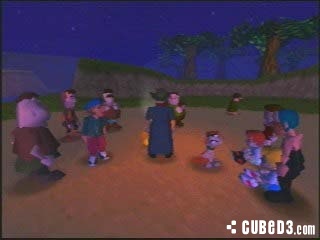
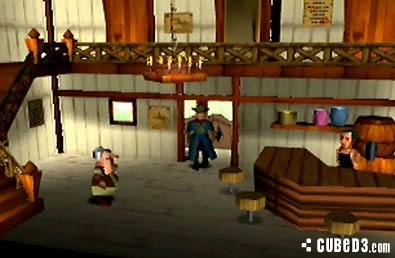

 Sign In
Sign In 28.03.2012
28.03.2012  Game Details
Game Details TBA
TBA  TBA
TBA  TBA
TBA  TBA
TBA  Azuardo
Azuardo 
 Link to this post:
Link to this post:  Subscribe to this topic
Subscribe to this topic Features
Features






 Top
Top

